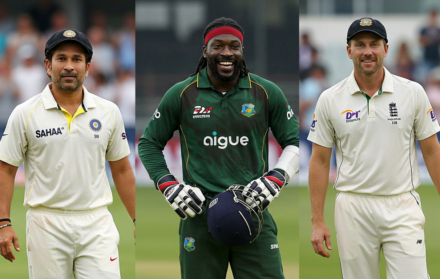
Womens Cricket and Gender Equality in Sports
Women’s cricket has seen a significant rise in popularity and recognition in recent years, contributing to the ongoing pursuit of gender equality in sports. With a growing number of female cricketers showcasing their talent and breaking barriers, the sport has become a driving force in advocating for equal opportunities and participation for women in the athletic realm.
A notable initiative in this direction is the collaboration between Sixes Social Cricket and the We Got Game campaign, aiming to offer free cricket sessions to women and girls, thereby promoting inclusivity and participation. This article will delve into the various aspects of women’s cricket and its impact on gender equality.
It will discuss women’s cricket and gender equality, the increasing recognition and support, the challenges faced, economic disparities, the importance of role models, and the empowerment of women athletes. Considerations will be given to promoting participation from grassroots levels and the future prospects of women’s cricket.
By exploring these topics, we seek to understand the significance of women’s cricket in the broader context of achieving gender equality.
Sixes Social Cricket: Paving the Way for Womens Cricket and Gender Equality

Women’s cricket is not just a sport; it’s a movement. Taking center stage, it continues to shatter records and make history, featuring prominently in international tours, The Hundred, and for the first time, the Commonwealth Games. In a bid to celebrate these milestones and promote inclusivity, Sixes Social Cricket, renowned as the world’s premier immersive cricketing experience, has collaborated with the dynamic cricket campaign, We Got Game. This partnership aims to offer women and girls a unique opportunity: to play cricket for free every Friday night throughout the summer.
We Got Game is more than just a campaign; it’s a revolution. Hosted on Instagram, this platform is dedicated to elevating the profile of women’s and girls’ cricket. It serves as a communal space for young women and girls with shared passions to connect, both on and off the field.
In alliance with We Got Game, Sixes is rolling out free batting sessions for groups of women and girls every Friday. These sessions are available across all Sixes venues, including Birmingham, Manchester, Fulham, Fitzrovia, White City and now on Texas, Dallas. The objective? To introduce more women to the sport and emphasize that cricket truly is a game for everyone.
This initiative was inaugurated on 29 July, coinciding with the India vs. Australia match in Birmingham and the commencement of the 2022 Commonwealth Games. It also served as a precursor to the second edition of the highly acclaimed ‘The Hundred‘ women’s competition, which began on 11 August.
Calum Mackinnon, Co-Founder of Sixes, expressed his enthusiasm about the partnership with the ECB on the We Got Game initiative, stating,
“Cricket is for everyone, and we want that to be reflected at our social cricket venues up and down the country.”
He further highlighted the significance of this summer for women’s cricket and expressed eagerness to see more women engaging with the sport.
Echoing this sentiment, Issy Wong, a player for England Women and Birmingham Phoenix, remarked,
“It’s awesome that women and girls will be able to try cricket for free at Sixes every Friday this summer! We Got Game is all about getting more women and girls excited about cricket and feel like it’s a place for them. Cricket changed my life, and I love that this gives everyone the chance to try it out.”
In a world striving for gender equality, initiatives like these not only promote inclusivity in sports but also inspire countless women and girls to pursue their passions fearlessly.
The Rise of Women’s Cricket

The rise of women’s cricket has been remarkable in recent years, gaining popularity and recognition. This upward trend can be attributed to various factors, including increased investment in the sport, improved infrastructure, and resources. Women’s cricket has garnered significant media coverage, boosting its visibility and reach.
The investment by sporting bodies and sponsors has played a pivotal role in nurturing the environment for female cricketers. Thanks to the efforts of television networks and streaming platforms, there has been a surge in the broadcasting of women’s cricket matches, captivating new audiences and expanding its fan base.
The remarkable achievements of players like Meg Lanning, Ellyse Perry, and Smriti Mandhana have served as a beacon of inspiration for a new generation of female cricketers. Women’s cricket has effectively challenged gender stereotypes and fostered greater opportunities for women in sports.
It is imperative to sustain this momentum and actively support the development of women’s cricket across all levels. By doing so, we can ensure the continued growth and success of this remarkable sport.
Fighting for Gender Equality in Sports
Gender equality in sports is a current topic of discussion and action. Women athletes are actively fighting for gender equality in sports and equal rights and treatment in various sports. Here are some important considerations regarding the fight for gender equality in sports:
- Representation: It is crucial to provide women athletes with equal opportunities to compete and showcase their talents. To achieve this, there should be more women’s events and tournaments that provide a platform for female athletes to shine.
- Pay disparity: One significant issue is the pay gap between male and female athletes. By addressing this issue and ensuring equal pay for equal performance, we can promote gender equality and encourage more women to pursue careers in sports.
- Media coverage: Women’s sports often receive less media attention compared to men’s sports. This lack of coverage negatively affects the visibility and recognition of female athletes. To tackle this, we need to improve the media coverage of women’s sports, creating role models for young girls and inspiring their participation in sports.
- Investment: It is important to have adequate funding and resources that support women’s sports at all levels. This includes investing in training facilities, coaching staff, and promoting women’s sports events. Increased investment will not only develop talent but also promote the overall growth of women’s sports.
- Leadership roles: Women should have equal opportunities for leadership positions in sports organizations. Having women in decision-making roles brings diverse perspectives and ensures that women’s voices are heard and their interests represented.
- Changing mindsets: Achieving gender equality in sports requires a shift in societal attitudes and stereotypes. It is necessary to challenge traditional gender roles and promote the idea that women can excel in any sport they choose.
By addressing these factors and fighting for gender equality in sports, we can create a more inclusive and equal sporting environment for all athletes.
Increasing Recognition and Support

To enhance recognition and support for women’s cricket and promote gender equality in sports, certain measures can be taken:
1. Media coverage: Ensure that women’s cricket receives equitable media coverage as men’s cricket. This will increase visibility and interest among fans. Allocate more airtime to women’s cricket matches and provide comprehensive coverage of tournaments and events.
2. Sponsorship and funding: Increase financial support to facilitate the growth of women’s cricket. Investment in sponsorship deals and financial assistance to teams and players will enhance infrastructure and facilities and attract young talent.
3. Equal pay and incentives: Women cricketers should receive the same remuneration and incentives as their male counterparts. Eliminating the gender pay gap will motivate players and encourage more women to pursue cricket professionally. Recognize and reward their efforts and achievements.
4. Promotion and marketing: Develop promotional campaigns and marketing strategies specifically tailored to women’s cricket. This can involve advertisements, social media campaigns, and collaborations with influential personalities. Make women’s cricket more mainstream and attract a wider audience.
5. Participation and grassroots development: Encourage girls’ participation and development programs in cricket. Provide equal opportunities for girls to learn and play cricket in schools, clubs, and academies. Invest in coaching, training facilities, and talent identification programs to nurture young talent.
Breaking Stereotypes in Women’s Cricket
The talent of women’s cricket has increased significantly in recent years. Many players have shown exceptional skills, demonstrating their ability and passion for the sport.
Challenging traditional gender roles is crucial in breaking stereotypes in women’s cricket. Recognising and celebrating the achievements of female cricketers highlights their dedication, determination, and hard work.
To break stereotypes, providing equal opportunities is crucial. This includes promoting participation at grassroots levels, providing proper training facilities, and offering competitive leagues and tournaments for women.
Increased media coverage and recognition of women’s cricket play a vital role in breaking stereotypes. Providing equal exposure and airtime for women’s matches allows fans to appreciate and support the sport.
Inspiring young girls to pursue cricket involves showcasing successful women cricketers as role models. This promotes empowerment and encourages more girls to join the sport and challenge traditional gender boundaries.
To further promote breaking stereotypes in women’s cricket, actively challenge gender biases, support inclusivity initiatives, and advocate for equal pay and resources for female cricketers. Let us celebrate women’s achievements in cricket and work towards a more inclusive future for the sport.
Importance of Role Models
Role models inspire and empower individuals, particularly in women’s cricket and gender equality in sports. They provide motivation and guidance, showcasing possibilities and breaking barriers. Here are some reasons highlighting the importance of role models:
1. Inspiration: Role models inspire young girls and women to pursue cricket and other sports, showing them they can excel in a traditionally male-dominated field.
2. Breaking Stereotypes: Female role models in cricket challenge societal stereotypes and perceptions about women’s capabilities in sports. They debunk the notion that sports are only for men.
3. Empowerment: Female cricketers achieving great heights and overcoming challenges encourage young girls to believe in themselves, fostering empowerment and self-confidence.
4. Representation: Visible role models in women’s cricket provide representation that matters. They show girls and women that their dreams and aspirations are valid and achievable.
5. Leadership Skills: Role models in cricket demonstrate the importance of leadership, teamwork, and resilience. Young girls can learn valuable life lessons from their examples, helping them develop and cultivate these skills.
To enhance the importance of role models in women’s cricket, talent must be nurtured, equal opportunities for participation provided, and the achievements of female athletes celebrated. Mentorship programs where experienced cricketers can guide and support aspiring players can foster talent and ensure a strong pipeline of future role models.
Continuing to celebrate and highlight women’s achievements in cricket is imperative, paving the way for a more inclusive and equal future in the world of sports.
Challenges Faced by Women in Cricket
Women in cricket face a multitude of challenges due to gender biases and systemic barriers. These challenges encompass limited opportunities, lack of investment, gender stereotypes, pay disparity, and limited media coverage.
Limited opportunities arise from the fact that there are fewer women’s cricket teams, tournaments, and resources in comparison to men’s cricket. Women’s cricket has historically received lesser financial support and resources, affecting infrastructure, coaching, training facilities, and overall sport development at the grassroots level.
Gender stereotypes play a detrimental role as women in cricket are often unfairly perceived as less skilled, athletic, and competitive, which ultimately limits their recognition and support. Female cricketers generally earn significantly less than their male counterparts, reflecting the wider gender pay gap prevalent in society. This pay disparity can discourage women from pursuing professional cricket.
Women’s cricket receives less media attention, hindering its growth, visibility, and the inspiration it could provide to young girls in search of female role models within the sport. To tackle these challenges and promote gender equality in cricket, it is crucial to increase investment, create equal opportunities, challenge stereotypes, and provide equitable support and recognition for women in the sport.
Economic Disparities in Women’s Cricket
When it comes to economic disparities in women’s cricket, it is important to consider several factors. Women’s cricket experiences significant disparities in funding compared to men’s cricket. This directly affects the resources available to women’s teams and their ability to compete at the highest level.
One crucial issue is the disparity in prize money between men’s and women’s cricket tournaments. For instance, in the ICC Cricket World Cup, the prize money for the women’s tournament is considerably lower than that for the men’s tournament. This undermines the recognition and value of women’s cricket.
Sponsorship deals and media coverage also contribute to economic disparities in women’s cricket. Major sponsors and broadcasters often prioritize men’s cricket, resulting in fewer opportunities for women’s teams to secure lucrative sponsorship deals and gain exposure. This lack of visibility hampers the growth of women’s cricket and its ability to generate revenue.
To address these economic disparities, there is a need for greater investment in women’s cricket at all levels. This includes increased funding for grassroots development programs, professional contracts for women players, and equal prize money for women’s tournaments. Sponsors and broadcasters should actively support women’s cricket and provide platforms for visibility and promotion.
By tackling these economic disparities, we can create a more inclusive and equitable environment for women’s cricket, boosting the growth of the sport and providing equal opportunities for female players to thrive both on and off the field.
Empowering Women Athletes
Empowering Women Athletes is vital for achieving gender equality in sports. The creation of opportunities, support, and challenging societal norms hinder the progress of women in athletics.
Increasing visibility and representation is one way to empower women athletes. Sports organisations should promote gender equality by featuring women’s sports events on mainstream media platforms and providing equal coverage and sponsorship opportunities. This will showcase talent and inspire young girls to pursue their athletic dreams.
Investing in women’s sports is another crucial aspect of empowerment. Allocating resources and funding to women’s sports programmes enables athletes to participate in high-quality training, access state-of-the-art facilities, and receive expert coaching. Providing equal resources allows women athletes to compete at elite levels and realise their full potential.
Creating a supportive and inclusive environment is essential. Sports organisations and governing bodies should establish policies that promote fair and equal treatment for women athletes. This includes addressing issues such as unequal pay, gender discrimination, and harassment. By cultivating a safe and welcoming atmosphere, women athletes can thrive and concentrate on their performance.
Implementing mentoring and leadership programmes further empower women athletes. Offering guidance, mentorship, and leadership opportunities helps women athletes build confidence, develop skills, and advance in their sporting careers. This paves the way for future generations of female athletes and reinforces their contributions to sports.
Promoting Participation from Grassroots Level

Promoting participation from the grassroots level is crucial for the growth and development of women’s cricket. Here are key initiatives that can help in achieving this goal:
- Community Outreach Programmes: Organising cricket camps, coaching sessions, and tournaments at the local level can encourage young girls to participate. These programmes should be accessible and inclusive to attract a diverse range of participants.
- School and College Partnerships: Collaborating with educational institutions to introduce cricket in their sports curriculum can provide opportunities for girls to learn and play. Creating inter-school and inter-college competitions can further stimulate interest and competition.
- Investment in Infrastructure: Developing cricket grounds and facilities specifically for women’s cricket at the grassroots level can provide a suitable environment for training and matches. This includes ensuring access to equipment and coaching resources.
- Role Models and Mentorship Programmes: Successful female cricketers as role models can inspire young girls to pursue the sport. Mentorship programmes that pair experienced players with aspiring athletes can provide guidance and support to nurture talent.
- Media Coverage and Promotion: Increasing visibility and media coverage of women’s cricket at the grassroots level can create awareness and generate interest among the wider population. Highlighting success stories, achievements, and progress can inspire more girls to get involved.
Implementing these strategies has proven to be effective in promoting participation from the grassroots level in various sports, including women’s cricket. By fostering a strong foundation through these initiatives, we can ensure the growth and success of women’s cricket in the future.
It is worth noting the historical impact of these grassroots initiatives. For instance, the women’s cricket movement in England gained momentum in the late 19th century through the efforts of trailblazers like the British Ladies’ Cricket Club. Their dedication to promoting the sport at the grassroots level led to the establishment of women’s cricket leagues and paved the way for future generations of female cricketers. Today, their legacy continues to inspire and shape the landscape of women’s cricket worldwide.
The Future of Women’s Cricket
The future of women’s cricket is filled with promise as the sport gains recognition and support. Several key factors contribute to this positive outlook:
- Increased participation: There has been a significant rise in the number of women participating in cricket, with young girls starting at an early age. This growth is driving the development of women’s cricket.
- Professional opportunities: The expansion of women’s cricket has led to the availability of more professional leagues and tournaments. This allows players to showcase their skills and compete at a high level, which is crucial for long-term growth.
- Global reach: Women’s cricket is gaining popularity worldwide, with teams from diverse nations competing. This not only expands the fan base but also generates significant interest in the sport.
- Media coverage: There has been a noticeable improvement in media coverage of women’s cricket. Increased visibility through TV broadcasts, online streaming, and social media platforms has raised awareness and attracted more followers.
- Support from governing bodies: Cricket governing bodies are investing in women’s cricket by providing necessary resources, funding, and infrastructure. This support is vital for talent development and overall game improvement.
- Gender equality in sports: Ongoing efforts towards gender equality greatly benefit women’s cricket. Offering equal opportunities, pay, and facilities for female cricketers contributes to its growth and long-term sustainability.
As these aspects continue to progress, the future of women’s cricket holds immense potential for further advancement and success.





